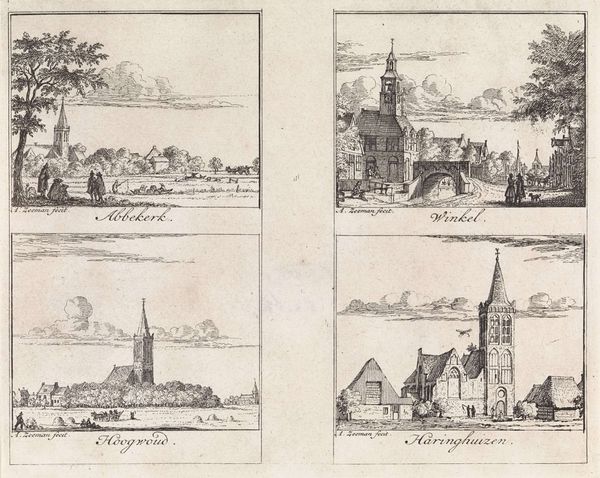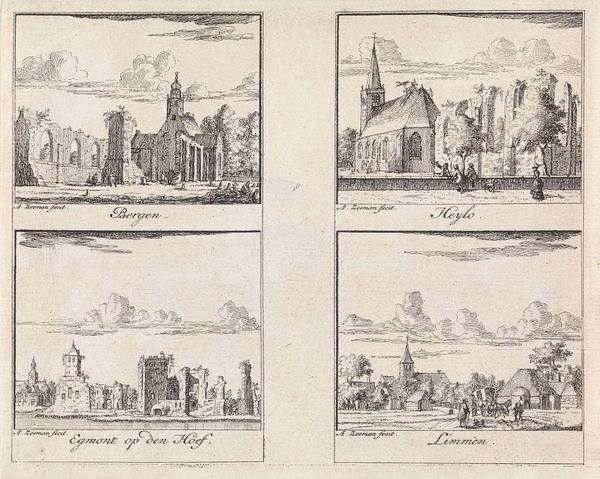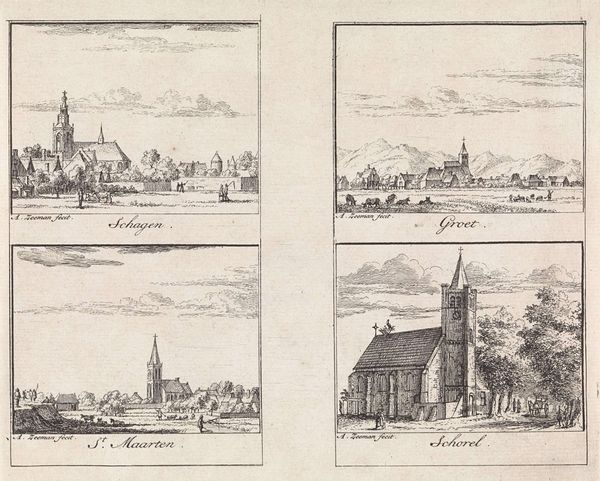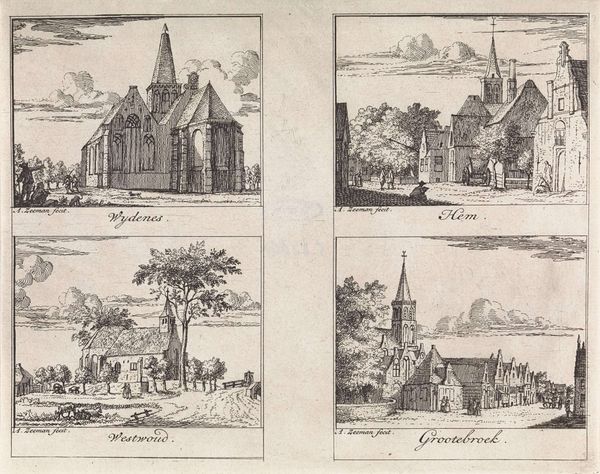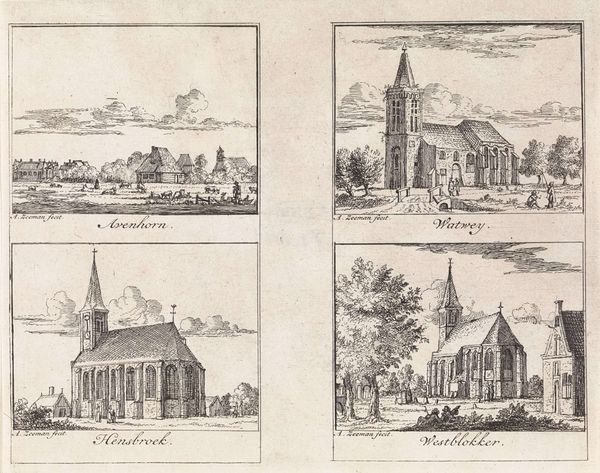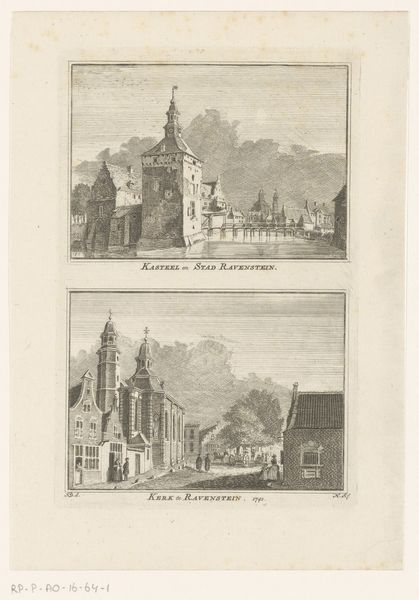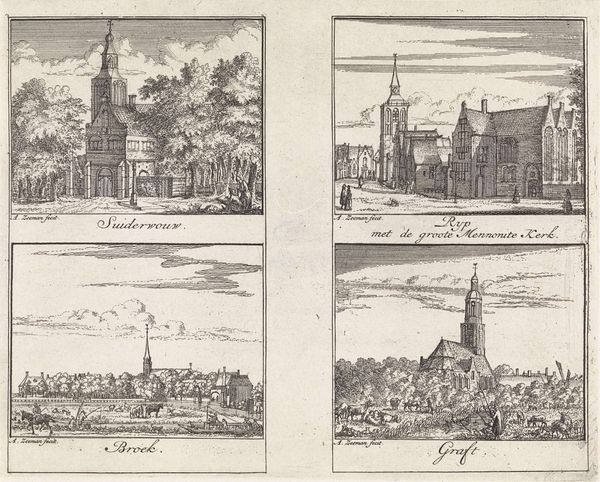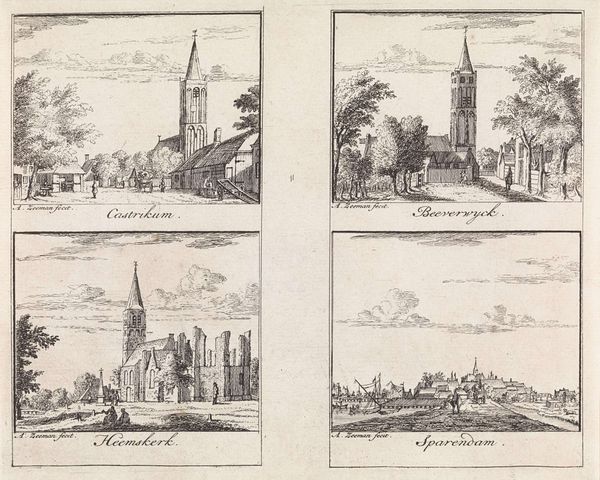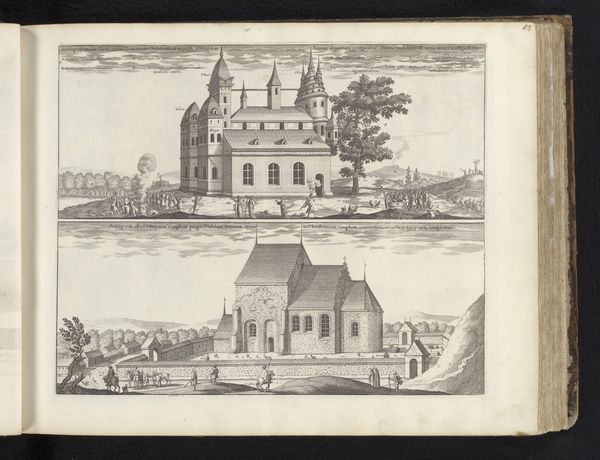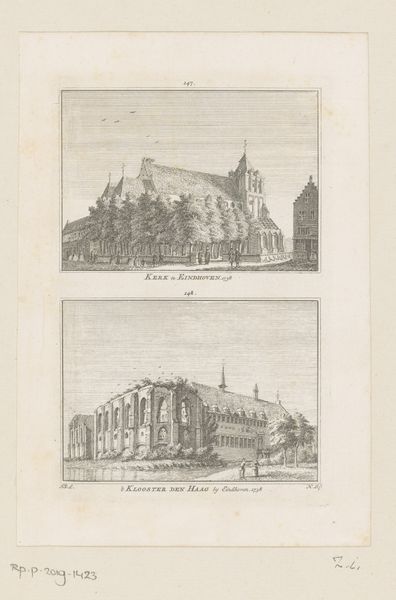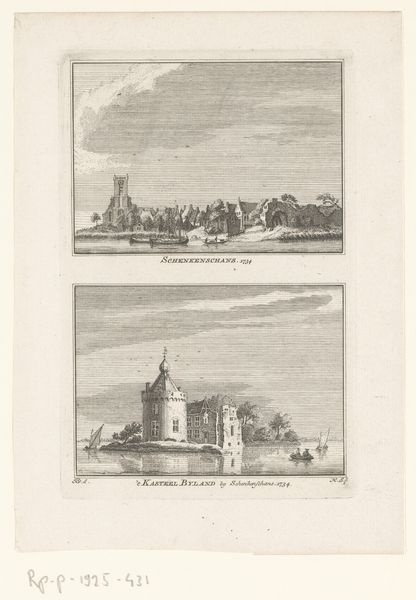
drawing, print, ink, engraving
#
drawing
#
baroque
#
dutch-golden-age
# print
#
landscape
#
ink
#
cityscape
#
engraving
Dimensions: height 146 mm, width 186 mm
Copyright: Rijks Museum: Open Domain
Abraham Zeeman created this print, entitled Gezichten op Bovenkarspel, Hauwert, Nibbixwoud en Twisk, sometime in the first half of the 18th century. The four scenes show villages in the province of North Holland, and offer us a window into the social and economic life of the Dutch Republic at this time. Zeeman emphasizes the architecture and topography that define these settlements. We see churches, windmills, and clusters of houses, along with figures going about their daily business. The emphasis on local landmarks and the signs of everyday life suggest a society focused on community and commerce. The Dutch Republic was, of course, a major economic power at this time, and prints like these speak to the civic pride of its citizens. To understand this image better, we might explore the history of cartography and Dutch printmaking. What was the role of these kinds of images in shaping ideas about national and regional identity? Historical research like this allows us to understand the social context that gave art its meaning.
Comments
No comments
Be the first to comment and join the conversation on the ultimate creative platform.
